Depictions of the Anime Lesbian: Land of the Rising Queer
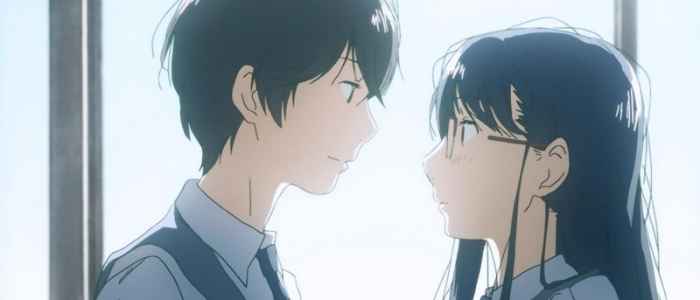
While many studies on the depiction of queer characters focused mainly on American television shows, not much research has been done on depictions of queer characters in alternative mediums. The alternative medium that I will be focussing on is anime; a popular entertainment form in Japan. Japan has two distinct genres that focus on homosexuality: Yaoi and Yuri. Yaoi loosely refers to homosexual relations between males while Yuri loosely refers to homosexual relations between females. This article, however, will be focusing exclusively on the depiction of lesbian characters in anime, with Aoi Hana being used as a case study. It is important, however, to first put into context Japan’s view on homosexuality and how this view affects the way in which queer anime characters are depicted.
History of Homosexuality in Japan
Japan’s view on homosexuality has changed significantly over time. During ancient times, homosexual relationships between samurai was seen as a common practice in Japanese society. The Japanese called this practice wakashudo, “the way of the youth”; which involved an erotic relationship between a lord and his young apprentice. In his famous book, Hagakure, “Hidden in Leaves”, Yamamoto Tsunetomo said that wakashudo was first initiated by the young apprentice himself and this would carry on until the apprentice had come of age:
“A young man should test an older man for at least five years, and if he is assured of that person’s intentions, then he too should request the relationship… If the younger man can devote himself and get into the situation for five or six years then it will not be unsuitable”.
During the Edo period (1603 – 1868), the practice of wakashudo slowly started to decline. While Edo Japan still found homosexuality acceptable in society, these relationships did not involve samurai anymore. Rather, these relationships were between travelling boy actors and men. According to Tsuneo Watanabe and Jun’ichi Iwata:
“The fact that after the end of the eighteenth century the [boy actors] mostly dressed themselves as girls, while during the Genroku period [1688 – 1704] they had dressed themselves gracefully as beautiful young men, also indicates a serious degeneration of the homosexual tradition”.
It was not until the Meiji Restoration (1868 – 1912), when Japan soon started to modernise under Western influences, that homosexuality was soon discouraged through Christian discourse. This influence still exists within Japanese society today.
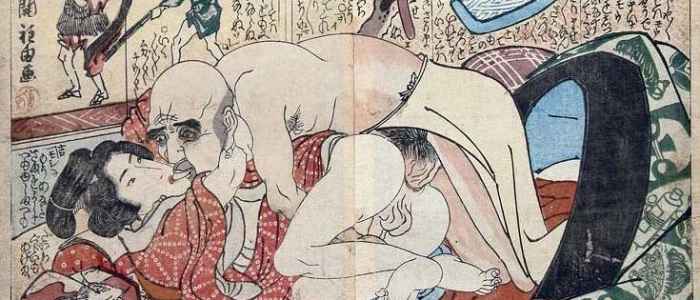
Same-sex marriages have still not been legalised in Japan and many homosexuals are stigmatised and seen as the “other” by society. According to Sam Shoushi, “it is said that a lot of LGBT people in Japan are “heterosexually” married but secretly, some openly, go to “Gay Areas” or have same-sex partners outside their marriage”. This, then, causes homosexuals to live “double lives”; a “normal” life expected by Japanese society and a secret life as a homosexual to avoid discrimination. Shoushi goes on to say that this discrimination against homosexuals is mainly caused by mainstream media. He says that “different Japanese television programs and shows present, or rather misrepresent, sexual minorities… these representations are limited to cross-dressers who are shown for the irony and the laughs”. While LGBT communities do exist in Japan, these communities cater more for male homosexuals rather than female homosexuals. This is due to the fact that women are still marginalised and economically disadvantaged in Japanese society compared to men. The rise of lesbian narratives and a series of double suicides in the 20th century, however, may have helped to give Japanese lesbians a medium in which to make their voices and stories heard to the public.
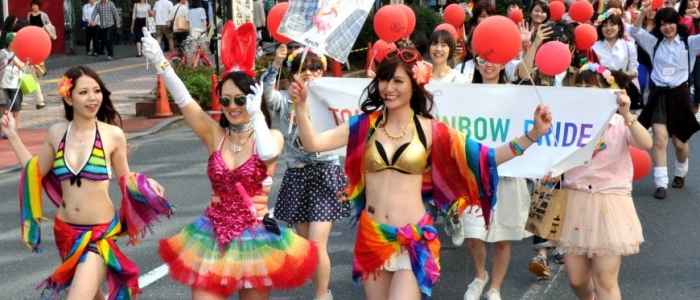
Characteristics of Yuri
Yuri, as a genre, traces back to the writings of famous Japanese lesbian writer Yoshiya Nobuko; who wrote narratives concerning lesbian relationships during the 20th century. One of Nobuko’s famous novels, Hana Monogatari (Flower Tales), dealt with a sexual relationship between two girls at a girls’ dormitory. Before Hana Monogatari was published, however, two school girls committed double suicide because their love for one another was considered “forbidden”. This act was the first of many lesbian suicides that occurred during the 20th century.
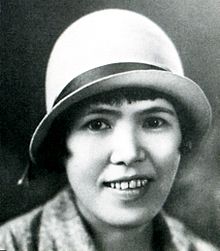
According to Nagaike, “the lesbianism portrayed in shojo [girl] manga remains fundamentally distanced from women’s corporeal desires for other women; instead, these texts emphasise the spiritual side of female-female…relationships”. Because shojo manga is aimed towards a female audience, explicit sexual content is mostly excluded from these narratives. Rather, sexual encounters between two women are implied through dialogue or actions. While Yuri narratives are mostly aimed towards females, especially those exploring their sexuality, there has been a surge in male audiences as well. Sakura Trick is an example of a Yuri anime aimed at a male audience. What makes Sakura Trick different to a Yuri anime aimed at females is that it is more sexualised in terms of its humour, mostly in the form of innuendo, and the way the girls kiss one another.
An interesting characteristic of Yuri is that male characters tend to be invisible or ignored from the narrative – Yuri narratives tend to only focus on female characters. If we extend this characteristic to reality, we can see that this male invisibility relates to the idea of voyeurism and the male gaze; secretly watching, for pleasure, the sexual relations between two women. Aoi Hana, however, subverts this idea as the anime includes male characters who sometimes help out the main characters in certain situations. We will now look at Aoi Hana and how the anime subverts – and reinforces – itself from the typical tropes found in the Yuri genre.
Aoi Hana
Aoi Hana is a coming-of-age story that follows the life of Manjōme Fumi and Okudaira Akira; two childhood best friends who reconnect with one another after a chance meeting at a train station. Fumi and Akira both attend all-girls schools, which is a common setting and aesthetic in Yuri narratives. Compared to other Yuri anime, Aoi Hana uses more dark colours in its setting rather than bright colours. The use of darker colours adds to the anime’s realistic and serious tone.
Fumi becomes involved in two lesbian relationships in the anime; one of them, however, is implied and never explicitly shown. This implied relationship involves Fumi and her cousin, Chizu. At the beginning of the anime, Fumi cries when she finds out that Chizu is getting married, ultimately breaking her heart. When the time comes for Chizu to get married, Fumi chooses not to attend the wedding and pretends that she is sick. Therefore it can be seen that the relationship is implied due to her not attending the wedding and crying due to a broken heart. The second relationship Fumi becomes involved in is with Yasuko, a very popular girl at both Fumi and Akira’s high schools. Fumi’s relationship with Yasuko is part of the anime’s main storyline and is explored and analysed throughout the anime.
Looking at Yasuko and Fumi’s relationship, we can relate the start of their relationship to the process of wakashudo; Yasuko is a high school senior while Fumi is a freshman. However, contrary to the traditional ways of wakashudo, it is Yasuko who pursues after Fumi rather than the other way around. This, in itself, could be seen as a type of rebellion against the male-centred LGBT community in Japan; showing that lesbians do not have to conform to the rules of men on how to have a homosexual relationship. When Yasuko and Fumi have their first kiss together in episode 4, the way it is presented is less about the male gaze and more about the emotion and realism between the two characters – the fact that this is the only kiss scene in the anime supports this claim.
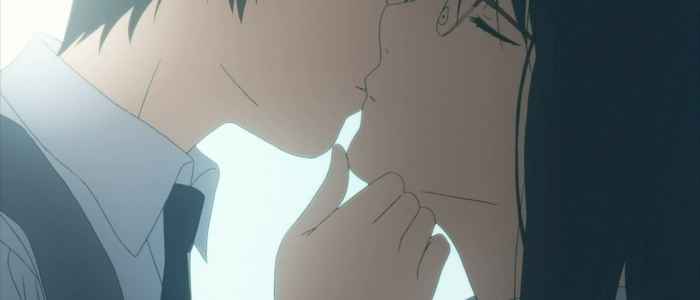
Fumi represents the closet lesbian; someone who is afraid to come out as homosexual in fear of being marginalised by her friends and family. This is a theme that is constantly explored in Aoi Hana, as Fumi does not confess to her parents that she is a lesbian. When her parents do speak to her about relationships, they assume that she is heterosexual. Fumi also has an introverted and shy personality, which also adds to her fear of coming out to her peers. According to Jack Drescher, “to be gay, in contrast to being homosexually self-aware, is to claim a normative identity. In other words, defining oneself as gay usually requires some measure of self-acceptance”. This is something Fumi contends with throughout the anime. According to Erica Friedman, “Fumi’s struggle to understand herself in relationship to the people around her, her growth and her brutal honesty transports this story from the realm of the typical into a sphere of storytelling far surpassing most Yuri in general”. Friedman goes on to say that:
“Fumi will not be likely to self-identify as “a lesbian” in this series, but she definitely deals with her attraction to more than one other girl and recognizes that this may indeed be part of who she is. Not only will she have to come to terms with this, so will Akira, and the other people around her”.
When Fumi eventually comes out to Akira that she is dating Yasuko, she is afraid of what Akira may think of her because she is dating a girl. Akira is unsure how to handle the news but she is later supportive of their relationship.
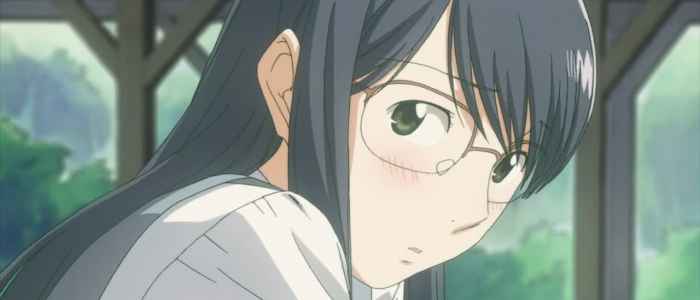
One of the critiques on Aoi Hana is Yasuko’s character. From a glance, Yasuko has a boyish look based on her hairstyle and tall stature. As mentioned earlier, Yasuko is very popular amongst the girls at her school as well as Akira’s. We can thus say that Yasuko’s popularity is based not on her personality, but on her looks. In Japanese society, lesbianism is seen as a phase schoolgirls go through and once they have become women, they are expected to live “normal”, heterosexual lives. In this case, Yasuko’s looks perpetuates the idea that the schoolgirls are not in love with Yasuko because they are lesbians themselves, but because Yasuko represents the ideal man that they hope to be with one day.
What sets Aoi Hana apart from other Yuri anime, however, is that it also deals with bisexuality. Akira’s friend, Kyōko, is a bisexual. Throughout the series, Kyōko’s love for Yasuko is unrequited, yet she is engaged, by name, to her childhood friend, Kō. This relates to the point made earlier that homosexuals have to live “double lives” in order to be accepted into society. Even though Kyōko is constantly rejected by Yasuko, she still has a source of stability through her engagement with Kō. If we look at Kyōko’s life from the perspective of Orange is the New Black, we can see that her life runs parallel to that of Piper Chapman (Taylor Schilling) due to the fact that even though both of them are lesbians, they have a stable, heterosexual backup should things go wrong in their love lives. Yasuko, herself, is also a bisexual. In episode 7, when Yasuko tells her family that she is dating Fumi, her family is surprised by this news. This is not to say that Yasuko’s family is against their relationship, but rather that they are uncertain that the relationship will last long. When Yasuko’s sister, Kuri, labels her as bisexual Yasuko becomes uncomfortable because she knows her sister is referring to her other sister, Kazami’s, fiancé, whom she was previously in love with.
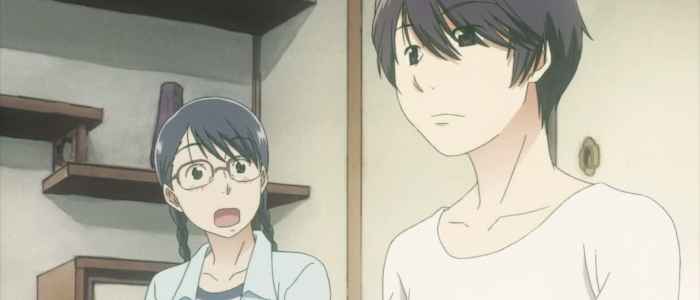
Throughout the series the characters comment on the reality of lesbians in modern Japan. In episode 4, when Yasuko and Fumi start their relationship with one another, Yasuko tells Fumi that she is about to walk “a path of thorns”. This illustrates the hardships that come with entering a homosexual relationship with someone and that it will not be easy to go through. Another instance is in episode 10, when Yasuko tells Akira’s older brother, Shinobu, that she used to date Fumi. Shinobu is quite surprised by this confession and Yasuko tells him that if she was in the same position he was in, she would react the same way – she acknowledges that people will most often find it hard to accept homosexual relationships.
One of the most interesting uses of commentary in Aoi Hana is its intertextual reference to Wuthering Heights; a 19th century novel that details two childhood friends who are in love with each other yet cannot be together at the end. This intertextual reference may be linked to the tragic reality of lesbian relationships in Japan. In Aoi Hana this may refer to Fumi and Akira, even though they do not become a couple in the anime.
Aoi Hana pays homage to its Yuri roots by naming its first episode “Flower Tales”, which was the name of Yoshiya Nobuko’s first novel. Based on the name of both Nobuko’s first novel and Aoi Hana, which is translated as “Sweet Blue Flowers”, flowers serve as an important metaphor in Yuri narratives. In Japanese society, the Sakura flower is a symbol of how beautiful, but short life can be. Sakura flowers are also a symbol of friendship and innocence.
Looking at Sakura Trick, for example, the Sakura flower serves as a physical metaphor of the innocence and beauty of adolescent love between Haruka and Yuu. On the other hand, however, the Sakura flower also symbolises the tragedy of how long this love may last. From the perspective of Aoi Hana, this notion seems to be mirrored when Yasuko and Fumi break up in episode 7. Yasuko explains that she is still an emotional wreck after being rejected by Mr Kagami, Kazami’s fiancé, and that due to the emotional state that she is in, she cannot be Fumi’s girlfriend. Fumi and Yasuko do not get back together after that as Fumi has moved on from the relationship and Yasuko went on to study abroad in London.
At the end of the series, Fumi realises that her true love is really Akira. Though she does not confess her feelings to Akira at the end, the open-ending leaves the audience to speculate whether this relationship may or may not take place. If this relationship were to take place between Akira and Fumi, just how long would this relationship last between the two of them?
Japan’s current view on homosexuality is one based on Western and Christian influence and discourse tracing back to the Meiji Restoration. Because of these surviving influences homosexuals are still marginalised in Japanese society and sometimes forced to live double lives. While LGBT communities do exist in Japan, these communities favour men more than women due to the economic hierarchy.
With the rise of lesbian narratives in the 20th century, tracing back to the works of Yoshiya Nobuko, lesbians are now given a medium in which to share their stories and opinions to others. According to Kincaid, “Yuri has helped girls that lean toward lesbianism come to terms with themselves…Stories that can be freeing since they don’t deal with the usual heterosexual concerns and conventions”. However, Yuri narratives have also started to be aimed towards male audience. These Yuri narratives tend to be more sexualised and more for the male gaze. Aoi Hana, however, aims to present its narrative in a more realistic and serious manner.
The anime details the life of Fumi and the hardships she goes through due to her sexual orientation. These hardships include two failed relationships and finding acceptance through herself and her peers. According to Friedman, “[Aoi Hana] is the story of a young woman who enters high school and comes to terms with her sexual orientation. A story that has been told a million times, but rarely with this sense of grace, beauty and strength”. Yasuko’s boyish image is one of the main critiques of Aoi Hana, as her image creates the idea that her suitors are in love with her not because of her personality, but because she looks like a boy.
Aoi Hana also explores other sexual orientations, such as bisexuality, and creates commentary on the reality of lesbians in Japan through its characters and intertextual references. Flowers serve as an important metaphor in Yuri narratives, with the Sakura flower symbolising innocence and friendship. However, these flowers tend to have a short life and this is a reflection of how long homosexual relationships tend to last before homosexuals have to adapt to “normal”, heterosexual lives in order to fit within society. While Aoi Hana may be a more realistic depiction of lesbianism in more recent years, it does not give a clear cut answer as to whether lesbians may be able to live happy lives beyond adolescence. Instead, its open ending leaves the audience to make that decision for themselves. With America’s recent legalisation of gay marriage, there may be hope that Japanese homosexuals may experience the same thing one day.
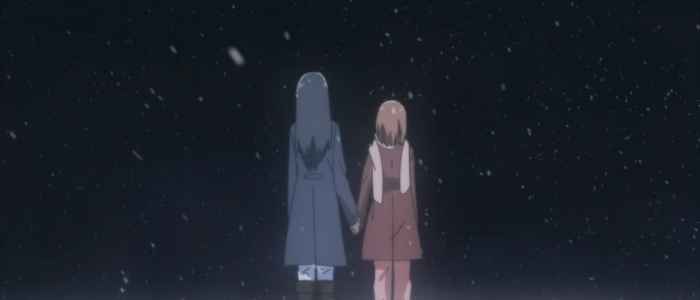
Works Cited
Aoi Hana (Fuji TV, 2009 – 2009)
Andrew Calimach. 2000. World History of Male Love, “Homosexual Traditions”, The Beautiful Way of the Samurai. Available: http://www.gay-art-history.org/gay-history/gay-customs/japan-samurai-male-love/japan-samurai-homosexual-shudo.html [Accessed 24 September 2015]
Homaro Cantu. 2013. The Significance of the Cherry Blossom: From Beloved Tree to Cultural Icon. Huffington Post. 30 July. Available: http://www.huffingtonpost.com/homaro-cantu/the-significance-of-the-c_1_b_3832895.html [Accessed 27 September 2015]
Jack Drescher. 2004. The Closet: Psychological Issues of Being In and Coming Out. Psychiatric Times. 1 October. Available: http://www.psychiatrictimes.com/articles/closet-psychological-issues-being-and-coming-out [Accessed 23 September 2015]
Erica Friedman. 2009. Review of “Aoi Hana” (“Sweet Blue Flowers”). After Ellen. 10 July. Available: http://www.afterellen.com/people/54693-review-of-aoi-hana-sweet-blue-flowers/2 [Accessed 22 September 2015]
Chris Kincaid. 2013. Yuri’s History and A Love Suicide That Raised Awareness. Japan Powered. 19 May. Available: http://www.japanpowered.com/japan-culture/yuris-history-and-a-love-suicide-that-raised-awareness [Accessed 22 September 2015]
Kazumi Nagaike. 2010. The Sexual and Textual Politics of Japanese Lesbian Comics: Reading Romantic and Erotic Yuri Narratives. Electronic Journal of Contemporary Japanese Studies. 30 September. Available: http://www.japanesestudies.org.uk/articles/2010/Nagaike.html [Accessed 22 September 2015]
Sam Shoushi. 2008. Japan and Sexual Minorities. HURIGHTS Osaka. June. Available: http://www.hurights.or.jp/archives/focus/section2/2008/06/japan-and-sexual-minorities.html [Accessed 25 September 2015]
Sakura Trick (TBS, 2014 – 2014)
Watanabe, Tsuneo and Iwata, Jun’ichi. The Love of the Samurai: A Thousand Years of Japanese Homosexuality. GMP, London, 1989, 121.
William Scott Wilson, trans. 1979. Yamamoto Tsunetomo, Hagakure, The Book of the Samurai. New York and Tokyo, Kodansha International, 58.
What do you think? Leave a comment.




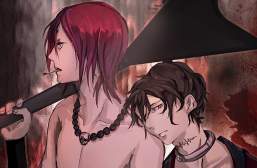
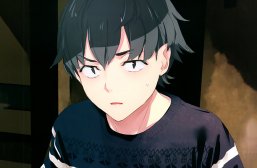

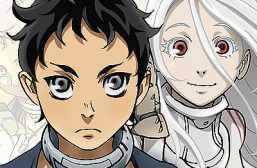
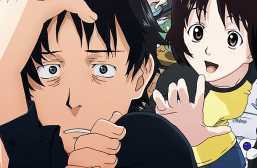
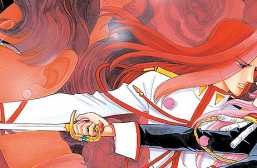
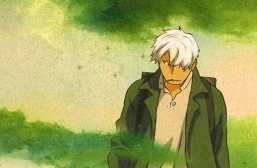
This series will always hold a special place in my heart. I’ll always remember that year or so that had Aoi Hana, Octave, Sasameki Koto, and Girl Friends all being released at the same time. So much good Yuri.
I love the Aoi Hana anime and manga, and I’m glad to see it recieving attention here on The Artifice. Hopefully more yuri articles will be posted here in the future.
I can not say how awesome this show is in handling a yuri romance in a mature way! (and by mature I mean rational) There is absolutely NO offensive content!
Really nice article. I really do think there is a market for realistic yuri out there. Octave in particular I thought was fantastic.
It is extremely interesting to look at the inter-textual ties media and culture have. I wonder if Aoi Hana’s realistic portrayals were overshadowed at all by the comical portrayal of lesbianism in Ouran High School Host Club as the show and the manga ran around the same period of time. It is interesting to view how society and media often parallel one another especially with the same sex marriage legalization here in the United States. It is interesting to discuss the impacts of media on society as a whole.
Wow, very thorough article! It was highly informative. Admittedly, I know more about depictions of lesbianism in Japanese games than in anime, so this helped a good bit.
Such a bittersweet story.
I am trying to find other yuri/female romances (maybe one where you actually & gratifyingly get to see the main couple kiss ).
I like Aoi Hana, a lot. There were a lot of things in it that made me fall in love from the get-go.
It doesn’t pretend to be profound or have rampant fan service.
I sort of liked it. It was really sweet, but so slow. Since nothing extraordinary happened in the series, it felt realistic.
If I had to describe the manga in one word, it would be “unfocused.” Shimura didn’t know what she wanted to write. It started out well but then she suddenly started to focus more on the side characters for plot threads that never payed off or even concluded. Keep in mind that she did this during the most crucial times in the main romance, in a bimonthly series with very short chapters. A lot of the readers fled when she left them hanging for literally half a year without any progress in the main pairing’s story line. And this was followed up by Akira’s whole is-this-love-or-not spiel, which was dragged out even more.
Underrated comment for the article, and one that helps with this anime’s interpretation.
Super interesting article! This will definitely go on my to-watch list.
I think a lot of people associate flowers with women which just ties it in even more. I mean… check out Georgia o’keeffe’s art.
I wanted to know the bond of Fumi x Akira that was shown in the opening. I could never feel the closeness of those 2 anywhere in the episodes. And the fact that this didn’t happen at all in the series… that just left me empty inside.
The thing was that there was supposed to be a second season of the anime but due to poor DVD sales it got canned. The manga explores more about their relationship so you are more than welcome to check that out 🙂
The characters are what really drive Aoi Hana.
‘Realistic’ is a correct word for this anime.
I love this! damn im back to anime loving self again! XD thnx for the piece. this anime is so sweet..
When it’s an innocent love, I find yuri to be adorable despite being a heterosexual woman. I’m just a sucker for ‘vanilla’, as sweet love stories touch the heart.
Fumi and Akira are interesting, and I think the relationship between them is interesting to watch (especially the developments between them near the end).
To be honest, I much prefer the ending to the anime then the manga. So sweet…
While I think it is very important to highlight progressive works when they appear, I feel that while your article presented Aoi Hana is the context of Japanese society at large it neglected to place the anime in the context of the medium.
While there are occasional genuine pieces that break through and get produced into anime, the vast majority of yuri and shojou-ai stories that get made into anime are aimed at the male gaze and fetishize the lesbian relationships in them. For every Aoi Hana or Revolutionary Girl Utena there are a dozen pieces like Sakura Trick, Strike Witches, or Yuru Yuri.
I think there is a lot of potential for dialogue in how can lesbian (and gay) manga and anime show explicit and sexual relationships without objectifing the characters involved.
Amazing article! Now I know which anime’s to watch
Aoi Hana is not my first yuri but I find it’s very interesting from the beginning to the end!
One of these days I’ll need to go through this entire series again in one go to see how it carries up. Right now, it still stands as one of my favorite anime.
Aoi Hana as well as Sasameki Koto are some of the few animes that touches realistically on how girls find themselves attracted to the same gender. This is a genre that has so much potential but has been seldom built upon, at least not without the usual degrading fanservice that takes away some of the pure elements of human interaction.
This is a great topic and a very well written analysis. I’m writing something similar about the LGBT rep for both wlw and mlm in anime, and much of the same research applies. The heterosexual marriages of queer folks in Japan and the “double lives” are points I didn’t include in my research but very important.
I’ve found that mlm is often more commonly represented in anime with than wlw, and the mlm relationships usually have more depth. Aoi Hana is excellent, but a rarity for sure. I have theories about why this is true, but I wonder what you would think about it.
Thanks for sharing this!